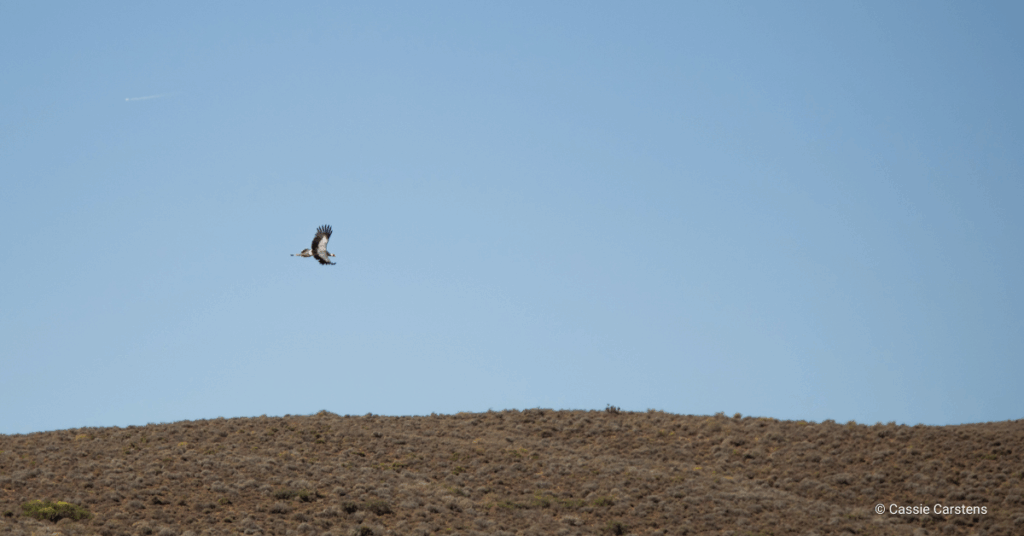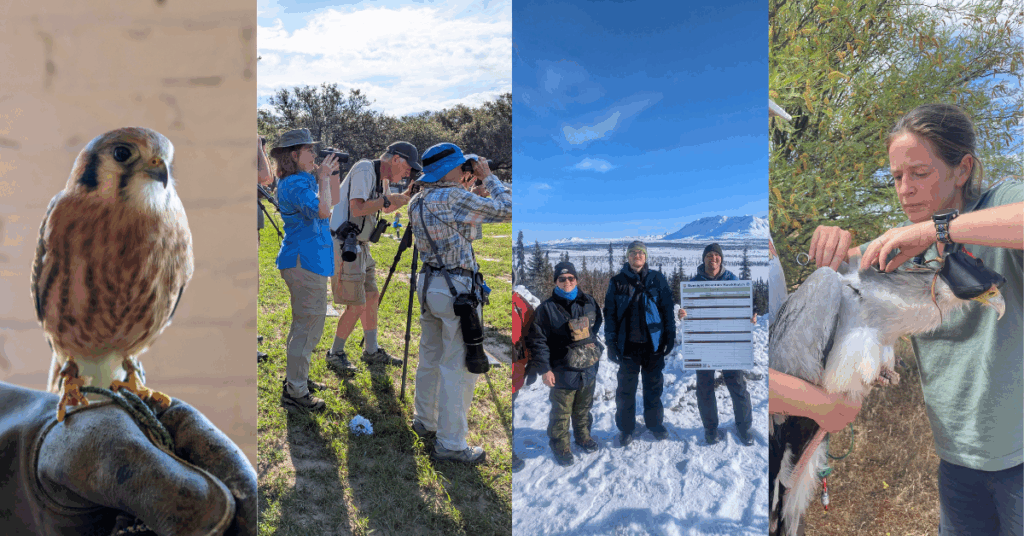For most people, the only up-close interaction they will have with raptors is when an individual is in dire straits. The spring season is when we see most human and wildlife interaction as newborn birds are just figuring out how to make their way through this big world. Let’s talk about what we can do to help and what to do when the worst happens. Please remember that it is illegal to possess, own, keep, capture, or transport a wild bird, dead or alive, without the proper state and federal permits.
To start, HawkWatch International is not a licensed rehabber. That means we do not have the permits to take in injured wildlife. That also means we work regular business hours and cannot field your calls after hours or on the weekend. If your read through this blog and decide that a bird you have encountered requires professional assistance from a rehabber, you can find someone local to you using these resources…
- If you’re local to our home base in Salt Lake City, UT, we recommend the Wildlife Rehabilitation Center of Northern Utah*
- If you’re elsewhere, Animal Help Now can find a rehabber near you.
I found a baby raptor on the ground.
The first question to ask yourself is, does this bird have feathers? If the bird is hopping around on the ground and has feathers, it’s a fledgling, and you should leave it alone. This bird is just trying to figure out how to fly and is bound to spend a fair amount of time on the ground. Most likely, their parents aren’t too far away. If the bird does not have any or very few feathers, they are a nestling. If you can find the nest, return them to it. It is a myth that parents will reject their are young because of your scent left from handling them. If you can’t find the nest, call a raptor rehabber for more assistance, and do not move the bird.
I found an injured raptor.
Confirm the raptor is injured by looking for any obvious broken bones, bleeding, or external parasites such as maggots or flies. Do not handle the raptor unless absolutely necessary, ie, if you need to move a bird out of the road or harm’s way. Next, contact the U.S. Department of Fish and Wildlife or a wildlife rehabilitator in your area for assistance.
The rehabber has asked me to transport the raptor, or I need to move its location to keep it safe from imminent harm.
To handle a raptor, you will need a towel, thick gloves, a mask, and an item to transport the bird in (ie, an animal carrier or a box). Using the towel, gently take hold of the raptor by keeping the bird’s wings close to its body (unless the raptor has clearly suffered an injury to the wing) and keeping your hands out of reach of the raptor’s talons. Place the bird in the box or kennel. Make sure the box is big enough to the bird does not inflict more injury and that there are ventilation holes. Keep the box dark to keep the bird calm.
NEVER feed or hydrate a raptor. This can make the situation worse and should be left to the professionals.
This video from Teton Raptor Center does a great job of walking you through what to do with an injured bird: https://vimeo.com/210853152
I found a dead raptor.
Remember, it is illegal to possess, own, or keep a wild raptor or native bird without the proper state and federal permits. That means you cannot keep feathers or a raptor carcass. If the bird is an eagle, endangered species, has banding or tracking equipment, or was clearly hurt by human causes (ie shot, poisoned, electrocuted), please report the death to the U.S. Fish and Wildlife Service or your local Division of Wildlife Resources. They will provide further information on how to proceed. If your raptor does not fall into these categories, or you are permitted by local authorities, you may dispose of the bird. Wear PPE such as gloves and a mask, double bag the raptor, and dispose of it in your trash.
*The Wildlife Rehab Center of Northern Utah will no longer be able to take patients as of May 15, 2023. We encourage you to utilize Animal Connect Now for assistance with injured wildlife.
This blog was written by Sammy Riccio, HWI’s Donor Engagement Coordinator. You can learn more about Sammy here.



